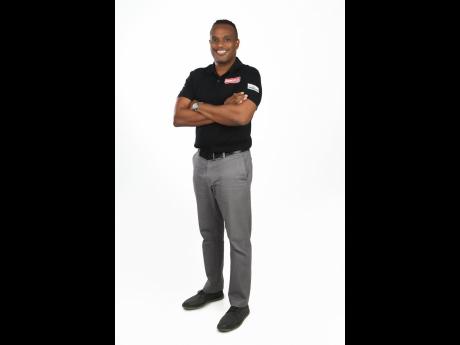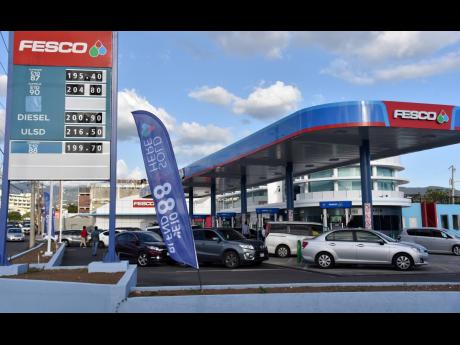Fesco leaps ahead of local gas pack
Fesco has overtaken Petcom as the largest locally owned gas station brand, but still trails the big multinational petroleum marketing companies, whose networks range from double to quadruple its size, based on industry data garnered by the Financial Gleaner.
Just over a decade ago, five independent gas station owners broke away from the arrangements they had with big gas brands to set up their own marketing company, giving rise to Future Energy Services Company Limited, which trades as Fesco.
The gamble soon started paying off for the local investors who continued to operate their gas stations, but as part of the Fesco network. Then three years ago, Fesco went public and listed on the stock market, amid ambitious plans for expansion.
It then had a network of 14 service stations that were all dealer-owned.
Since then, the company has grown its footprint to 23 gas stations, all but one of which are still dealer-owned; launched its own brand of lubricants called Futroil, car care line called Futrlube; grocery and consumer brand FYC; and acquired a liquid petroleum gas business, otherwise known as LPG or cooking gas. The LPG business was rebranded as FesGas.
At 23 service stations, Fesco is still at less than half the network size of the smallest foreign marketing company, Rubis, which manages 52 stations. But the Jamaican company is still in growth mode with a project to build out four to five more stations in the short term, which would give it a network of around 27 or 28 by year 2026.
That barely narrows the gap with the big three. But the company has additional plans to grow the network to 40 locations within five years, according to Fesco CEO Jeremy Barnes.
Its growth so far has seen Fesco racking up record after record in sales, including for the year ended March 2024, which delivered revenue of $28.8 billion. Its annual sales when it first went public was around a fifth of that, at $5.86 billion.
“We really set out to create value for the customers, and in so doing they reward us with more volumes, so it’s not a question of market share per se,” said Barnes in an interview with the Financial Gleaner.
“Many of our locations are about creating a sense of pride in Jamaica, creating something that is aesthetically pleasing,” he said.
Fesco’s bottom line has also grown exponentially over the same timeline. However, petroleum marketing, which is a costly business to run, mainly due to the volatility of oil and gas prices, has delivered low profit margins for the 11-year-old company. Fesco is also pouring money into its expansion, some of which is being financed by debt, adding to its costs in the form of debt servicing, and further impacting its margins.
Nominally, since 2021, Fesco’s annual profits have shot from $108 million to the present $500-million range.
However, on a proportionate basis, the company hasn’t moved the needle on the ratio of earnings it carves out of sales. Its net profit margin remains at or below the two per cent range.
The 2024 numbers are still subject to final verification, but Fesco’s preliminary report for the 12-month period ending March indicates a net margin of 1.79 per cent, based on profit of $515 million and sales of $28.77 billion. That’s even less than the 1.85 per cent ratio achieved in 2021.
Fesco is no longer the youngest player in the petrol market, but no other new entrant, which includes brands such as Yaadman, Regency Petroleum and Blaize, has come close to matching its pace.
Among the 340 service station marquees dotting Jamaica’s landscape, the line-up of the big six begins with TotalEnergies which has 80 locations, Texaco has about 70, Rubis is third with 52, Fesco follows with 23, Petcom with 18, and Johnson’s with 15.
The current line-up has seen Fesco jump from its self-declared sixth place in the market at the time it went public to fourth place three years later. It has also moved from third place among the local brands to the top slot.
To date, Future Energy Source, the company, only owns one of the Fesco 23 stations – a nascent operation that was developed at Beechwood Avenue in Kingston during the pandemic – but the new one to be built at Spanish Town Road, also in Kingston, to be called Fesco Oval, will also be owned and operated by the company.
The majority of the other stations are all dealer-owned and operated; however, two of the dealer-owned stations, at Hayes in Clarendon and Kitson Town in St Catherine, are operated on their behalf by Fesco.
Fesco Oval has already received permits and the development will proceed this year. It’s a big project, similar in concept to the Fesco Ferry complex that offers more than fuel. However, Fesco Oval is not expected to be as big as Fesco Ferry.
Additionally, Fesco Ferry is dealer-owned and operated by Hugh Coore, who is a co-founder and co-owner of Future Energy Source, while Fesco Oval will be company-owned and operated. The other four founders were Lyden ‘Trevor’ Heaven, Errol McGaw, Trevor Barnes and Junior Williams.
For the financial year ending March 2024, Future Energy Source grew its revenue by nine per cent, from $26 billion to nearly $29 billion. The numbers are preliminary, but as they stand, they reflect another record year of revenue for the petroleum marketing company.
“The increased volumes came from creating these destination stations and the new locations, and offering even more at existing locations,” Barnes said, while highlighting non-fuel services at various locations.
“At Ferry you’ll see the quick-service restaurant, money transfer and a convenience store; at Bodles it is pretty much the same thing, and a supermarket; Mandeville and Stony Hill, we have money remittances,” he said.
Having a convenience store is typical for many gas stations in Jamaica, but Barnes says Fesco and its dealers offer a lot more at their locations, turning them into what the company has coined as “destinations” for consumers.
Future Energy Source’s net profit for the year was $515 million, a near 10 per cent decline from $574.5 million. Barnes says this was due to a big 155 per cent increase in operating expenses, or opex for short, which climbed to $784.5 million.
The increased opex flowed from “acquiring, establishing and distributing LPG via our FesGas brand, which includes two company-operated LPG filling plants, increasing our network footprint by three service stations: Fesco Kitson Town, Fesco May Pen, and Fesco Port Maria, improving brand awareness, and increasing its advertising, depreciation and interest expenditure,” Fesco said it its latest report.
Fesco Oval is to be developed over 15 months and is slated for commissioning by July-September 2025. In addition, another three of four dealer-owned stations are to be established within 24 months, Barnes said.


